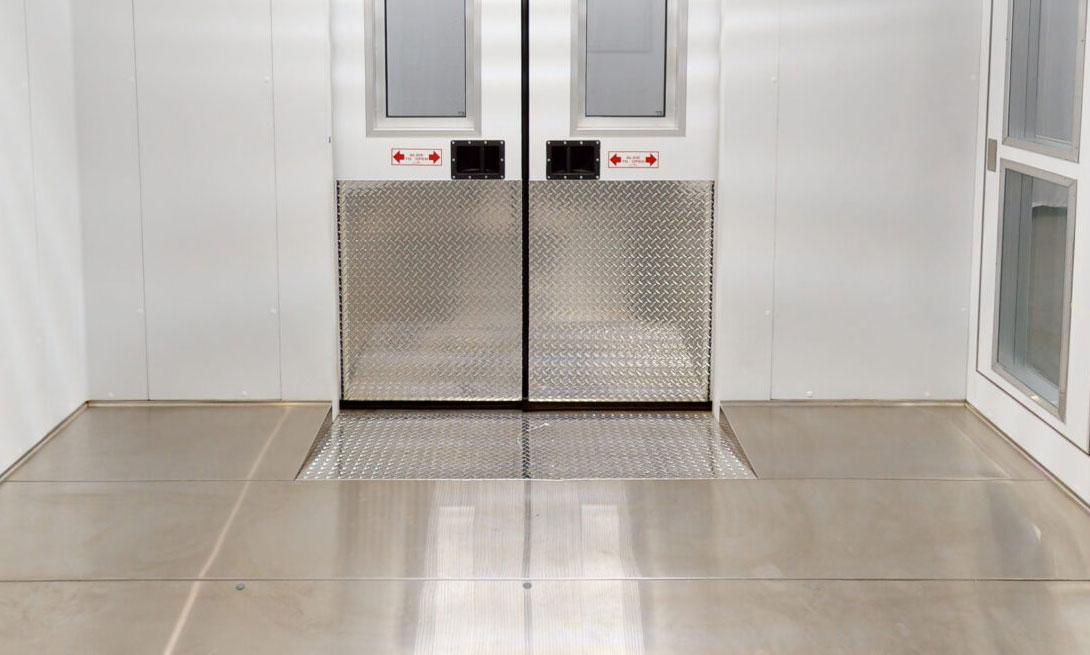A walk-in cooler unit is an expensive investment. Depending on your business, it can be one of the most important pieces of equipment that you own. One of the most important components of the walk-in is its floors. These surfaces see a high volume of traffic and thus are prone to damage when not specified correctly for the application. Choosing the right type of floor for your walk-in will make a big difference in the efficiency and the longevity of your unit.
Floor Basics
Walk-in units come in all different shapes, sizes, and configurations. Depending on the type of usage for your cooler, the type of flooring you need may differ. Let’s look at some basic options.
No Floor
This is a common option for walk-ins that allows for easy access without the need for ramps. It also allows the use of heavy equipment (carts and pallet jacks) to load and unload product, as it’s used directly over the existing floor. On coolers, an existing concrete pad works well to maintain temperatures at the typically designed 35°F interior temperature. On freezers, it is required for the slab to have a proper layer of foam insulation built in and a proper thermal barrier constructed around the freezer perimeter to prevent condensation issues on the concrete pad and walls around the freezer.
In most cases, walls join the floor via PVC screeding or a metal track. The PVC screed is an NSF approved channel that cradles the wall panels and provides a wall-floor finish joint while the metal track must be finished inside with a cove base molding. Both the PVC screed and the metal track can be anchored to the floor, however the metal track actually locks with the walls providing a better solution for locations where seismic requirements have to be met. In either case, sealing the joints between walls and floor with Butyl sealant is necessary at the time of assembly to create an airtight room.
Aluminum Paneling Floors
This is another common flooring type. These panels are very similar to the wall construction of most walk-ins except with a stronger inside material specified for light traffic. You can think of them as a sandwich: two metal sheets form the bread and insulation forms the inside. These panels can usually withstand around 600 pounds per square foot of stationary load. This is enough for foot traffic, stationary racks with light boxes but not more.
Wood Underlayment
The addition of wood under the aluminum interior layer helps to distribute the weight. While this flooring option is more expensive to install and replace, it is necessary for large loads. This paneling can support stationary loads up to about ~1,000-1,500 pounds per square foot. That is enough weight for medium to large carts filled with kegs.
Reinforced Flooring
This is the top-of-the-line flooring for walk-in coolers. The reinforcement comes from FRP channels that run through the insulation. These floors can support close to 2,600 pounds per square foot. This is absolutely necessary if your walk-in is intended to support full hand-jack pallets. A pallet full of soda can easily weigh in excess of 2,000 pounds.
Wear and Tear
How do you know when the time has come for the repair or replacement of your walk-in’s floors? There are several signs and indicators to watch out for.
Floor Damage
This is the most obvious of the signs. The area inside the walk-in, right in front of the door will usually show signs first because this is the highest-traffic area of the box. Depending on your flooring type, look for gouges, grooves, or deep scuff marks. Elsewhere in the unit, look for holes and gouges caused by shelving. Make sure to be on the lookout for large dents in the floor, as well. Employees may accidentally drop heavy items or roll too much weight onto the floor.
Delamination or warping of the interior metal surface can occur in cases where the floors are subjected to loads they were not meant to handle by design.
Temperature
Most units have required temperature checks. Is your unit using more energy than before to maintain a safe temperature? While confounding variables – like the number of door openings per hour – can make this metric hazy, looking for temperature fluctuations can provide valuable insight as to the health of your floor and other components of your walk-in.
Frost and Condensation
The presence of either frost or condensation is not a good sign for your walk-in. The evaporator unit in your walk-in may not be working properly. It should be working to remove moisture from the air. Be on the lookout for large amounts of frost buildup on boxes, goods, and surfaces. Some frost and condensation is normal because of regular traffic and door openings. Excessive moisture or frosting on a walk-in that has a refrigeration system that is working properly may indicate problems with the assembly or the condition of the enclosure – including the floors.
How to Fix Floors?
We now know how to identify damage and signs of damage, but how exactly does one fix a walk-in floor? If the damage is small, such as a minor floor gap, this can be sealed and patched. For larger issues, you will need to consult your refrigeration technician. These issues may include floor bowing, large floor gaps, large punctures, or extreme condensation and repair can go from floor replacement to overlays. The longer these issues go without repair, the harder and more expensive it is to fix them.
For a more thorough breakdown of Arctic floor types and features visit the Brochure section of our Resource Library.

